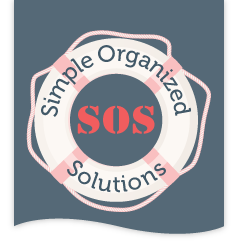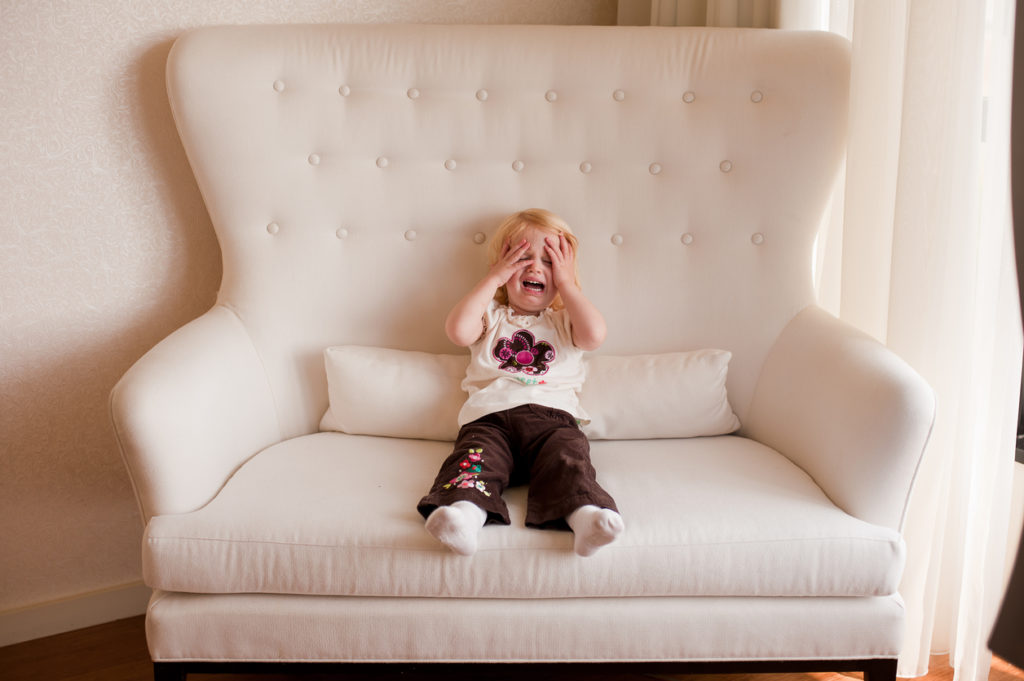- Before you buy something, ask yourself these questions:
- Do I need this?
- Do I already have something similar?
- Will I use this?
- Why do I want to buy this?
- When you bring a new item into the house, find it’s place right away.
- Use the one in, one out rule: when you bring an item into the house, remove an existing item.
- Car/house keys should have a central location right inside the entrance to your home. Either a dish on a foyer table or a rack to hang them from works very well.
- When storing items in cabinets and drawers, place the frequently used items in the front, and infrequently used items towards the back.
- Keep a supply of trash bags in the bottom of the can for easy retrieval.
- Remove Rx labels on medication containers before disposal to avoid health identity theft.
- Keep a basket by the door for items that need to be returned.
- Keep family members appointments visible by marking them on a centrally located calendar.
- Keep extra batteries in your camera case so you don’t miss that special moment.
- Mark the replacement due date on furnace filters when you replace them.
- Use tie wraps to bundle electrical cords for effective cable management.
- Have small spaces? Go vertical for storage with media towers, book shelves with 5 or more shelves, or install shelves on walls.
- Use post-it notes as temporary labels for storage space planning.
- Labeling containers & spaces leaves no doubt as to what belongs there.
- Set boundaries for each space. Relocate items that are not functional to the space or belong in another space.
- Label all your power supplies so you know what device it belongs to if they get separated.
- Keep gift cards in your purse or wallet so they are available when you need them. Write the balance on the card.
- You’re more likely to remember to bring reusable shopping bags into the store if you keep them in your car.
- To get organized, assign a home for everything. To stay organized, return everything to its home after using it.
- If you are undecided about what clothes to keep, turn the hangars around to point the hooks toward you. When you wear the item, turn the hangar to point away from you. At the end of a specified period of time, for example, 6 months, the clothes on the hangars pointed toward you need to go. For many, this can be a much-needed way to clear closet clutter.
- Keep gloves in their respective pockets in the coat that matches the gloves, so you have them where and when you need them.
- Decide what to wear to work the night before. If you have the room, layout the clothes. If you have kids, do the same for them if they are too young to do it themselves. If they are old enough, teach them this concept.
- Storing pairs of women’s shoes heal to toe uses less space and you can see both at a glance.
- Purge clothing items that no longer fit when you switch your wardrobe from summer to winter & vice versa.
- Purses are like magnets, you never know what’s going to appear in there. Clean & organize your purse weekly to avoid a sore shoulder or back.
- Keep a bag or bin in your closet for donations. When you come across an article you no longer want, toss it in the bin. When it’s full, take it to a favorite charity.
- Don’t stack folded tee shirts in drawers, file them so you can see them all at a glance.
- Don’t keep clothes that don’t fit, thinking you will lose enough weight to get back into them. It’s not a good motivator & rarely happens.
- Use multiple data backup options such as, an external hard drive and online storage service.
- To avoid identity theft, check accounts online daily, or invest in a monitoring service through your financial institution.
- Copy all credit, debit cards & drivers licenses and keep them in a fireproof safe. Update the copy as you get new cards.
- Check your credit records annually at a minimum and correct any misinformation that may surface asap.
- To protect personal information, scan it and save it to a flash drive, store it in a fireproof safe and shred the hard copy if feasible.
- Change passwords periodically on websites that require log in credentials as a means of enhanced security.
- Shred unwanted paperwork with personal information. Alternatively, use a secure marker on paperwork and prescription bottles before you recycle them.
- Invest in a portable fireproof safe to protect vital records & flash drives or external hard drives for computer backups. Portability allows for grab and go in an emergency.
- When changing or creating a password, use an acronym to make it memorable to you yet difficult to hack.
- Organize items for seniors based on their physical capabilities. Keep things at eye level & within reach if possible.
- When labeling items for seniors, make sure the font is large enough for them to see.
- Space planning & decorating for the elderly – omit throw rugs from the plan as they can be a tripping hazard.
- Space planning for the elderly – furniture should be placed with enough room to maneuver with a walker or wheel chair.
- Space planning for the elderly: side tables are a better option than a coffee table.
- Periodically check on the care your senior loved one is receiving from their homecare company to ensure they are receiving quality care.
- Space planning for the elderly: an open floor plan and minimal furniture allows for maneuvering safely & easily.
- Engage a senior by asking them to share their wisdom with you; it will likely make their day a little brighter & you will learn something!
- Put child proof caps on medicine bottles upside down for those with arthritis for easy access.
- Use your email inbox to store messages that have not been read or that require a response. Move them to the appropriate folder after taking an action.
- Create a folder for multiple messages that you receive on a specific topic. When you finish reading or acting on a message, move it to its folder or delete it.
- Make your inbox work more efficiently for you. Set up rules for specific messages, such as informational messages, to go right into a folder to read at a later time. This will keep the distraction of incoming mail minimal.
- A misc email folder can become equal to a junk drawer. Label all email folders with a specific category.
- Use the same categories for your electronic files that you do with your paper files. This provides a level of consistency so you can find the file whether you need the paper or electronic version.
- For email messages to keep for future reference, change the subject line to today’s date, and the topic of the message, & be specific. Then move it to the folder for that topic.
- Electronic bills–Schedule payments as you receive the reminder email. Record the date, time & confirmation number in your check register. When the payment shows up on your bank statement, delete the reminder.
- To reduce email inbox clutter, unsubscribe to newsletters that no longer serve you.
- Keep your smart phone desktop clutter free by reviewing your apps periodically. If you don’t use an app, delete it. Clutter is clutter wherever it is & causes stress.
- Create a plan that includes all family members, make sure everyone knows the plan and practice it.
- Keep vital records & medicines for each family member, including pets, in a portable carrier handy to grab & go.
- Keep supplies in various locations such as your car, basement, and an outdoor shed in case you can’t get to one of the locations.
- Invest in a NOAA weather radio to alert you during sleep when severe weather warnings are issued.
- Keep a flashlight in a drawer in a bedside table in case you lose power in the middle of the night. Periodically power it on & off to make sure the batteries haven’t drained.
- Start up your generator and let it run for about 20 minutes every month to keep it in good working order for when you need it.
- Invest in a portable charger power bank for your cell phone for those inevitable times when the power goes out.
- To shelter in place, store emergency supplies in a large plastic garbage can on wheels in an easily accessible space. Store the heavier items on the bottom.
- Periodically rotate emergency supplies to make sure you don’t have expired products.
- Keep a magnetic pad of paper on your refrigerator, and when you find you are running low on something, put it on the list. When you go to the store, your list of supplies is at hand!
- When storing kitchen towels in drawers, rolling them up uses less space.
- Use single & double tiered turntables in cabinets and pantries for smaller items such as spices, sauces, and canned goods.
- Check for expired products in your refrigerator, freezer & pantry each time you put away groceries, and don’t forget to eat up the leftovers before they go bad.
- Prepare your grocery list by aisle to make your shopping trip quicker.
- Keep only the plastic storage containers that have matching lids for food storage. Use the smaller flat containers as drawer organizers.
- Creating zones in your kitchen keeps everything you need for that task together.
- To save kitchen counter space, install an under-the-cabinet paper towel holder.
- To avoid counter clutter, only keep items on the counter that you use daily.
- Install slide out shelves in kitchen cabinets & pantries for easy access to items at the back of the shelf.
- Nest smaller plastic bowls inside larger ones for efficient use of space.
- Arrange food items in cabinets & pantries so the labels are clearly visible.
- Sort laundry as you go! Get a 3 section sorting cart for the laundry room. As you bring items into the laundry room, sort them right then.
- If you have the room, label a laundry basket for each member of the household, and one for the household in the laundry room. As you finish folding an item, put it in the appropriate basket. Have each family member put away their own items.
- Socks have a way of disappearing while doing laundry. When they come out of the dryer, match them up and fold them inside one another.
- Keep a dish in your laundry room for change you find in pockets. Use the change to help pay for laundry supplies.
- If your laundry room is small, and there is no room to fold clothes, use the top of the dryer for folding.
- Wash loads of laundry throughout the week to keep it under control.
- When you fold clothes right out of the dryer, you are more likely to take the last step to put them away.
- Keep a basket in your laundry room for lone socks to match them up when only one sock comes out of the dryer.
- Store bed linens in a plastic storage container under the bed that they fit, so you know which bed they belong to.
- Create a Command Center with an expandable file in a central location. This is a landing place for paperwork such as mail, tax documents, kid’s homework, and school announcements. Assign a file for each family member, and one for bills, incoming/outgoing mail, receipts, takeout/delivery menu’s, etc.
- Weed your paper clutter every time you come in contact with a document. When you’re opening mail, looking for that receipt to make a return, or filing a paid bill, recycle/shred what you no longer need/want to keep.
- Recycle old magazines by taking them to your doctor’s offices after removing the address labels.
- A good filing system is the foundation to get your paper clutter under control, so invest in the Freedom Filer filing system for maintenance free filing!
- Recycle or dispose of past copies of phone directories & magazines as soon as you get a current copy.
- Keep frequently used user’s manuals with the item it belongs to so you have it where you need it.
- Set up an action file within easy reach on your desk, or mount it on the wall. Create the categories specific to you by determining 3 or 4 actions you take on a regular basis.
- Use an envelope or expandable file for credit card receipts. When you get your bill, mark off your receipts, shred unneeded receipts & file the keepers.
- Designate a space in your home to sort, open and discard unwanted mail. A decorative basket on a counter top works nicely.
- Have those coupons & gift cards at the ready by keeping them in your purse or your car.
- Keep a recycle bin & paper shredder in the area where you open mail to reduce paper clutter as it comes in the door.
- Before you begin any project, set up your workspace for optimal productivity.
- Have a mundane task or 2 that you dislike? Make a game of it such as setting a timer to see how long it takes. Try to beat your time.
- Schedule 2 timeslots in your day to read and respond to email messages; perhaps 30 minutes in the morning and 30 minutes in the afternoon.
- For optimum productivity, schedule your priority tasks for the day in the following blocks-morning, afternoon & evening.
- Overwhelmed by all your stuff & don’t know where to start? Focus on a small area such as a drawer or part of a countertop. After it’s cleared and organized, see how you feel. It may be the motivation you need to spur you on to keep going one small area at a time.
- As you set your goals, determine rewards for yourself when you reach them. Rewards serve as great motivators.
- If you are stuck in the creative process or unsure as to your next steps, stop & do something else. This may be the jolt you need to get back on track.
- Setting goals and developing a goal statement are keys to building the foundation of a successful plan.
- Develop a mental image of your goals and keep that image in the forefront. If you can visualize it, you can attain it.
- Keep a separate bag of toiletries ready, to save time when packing for a trip.
- Clean the house before you leave. You will feel less stressed knowing you are coming home to a clean house!
- Use up fresh food items prior to leaving so they don’t spoil while you’re away.
- Don’t forget to make arrangements for pets while you’re away. If you board your dog, schedule a bath for right before you arrive to pickup your pet.
- Confirm all reservations (ie., flights, hotels, etc.), at least a week in advance.
- If driving, take your vehicle in for a service check 2 weeks prior to your departure date to allow sufficient time for repairs.
- If flying, print out boarding passes prior to going to the airport.
- Pack shoes around the perimeter of your suitcase with the soles toward the outside. This way if there is anything on the soles, it won’t end up on your clean clothes.
- For overseas travel, pack a tote bag to carry on the plane, with necessities for at least 1 day, in case your luggage gets lost.
- Fill a pill organizer with medications, for each person respective of their needs for each day of the trip; label each case with their name.
- If the lodging at your final destination has a laundry facility, pack fewer outfits & wash them midway thru your trip.
- Put timers on lights inside the house so it looks like someone is there; as an alternative, hire a house/pet sitter – if you have pets.
- For staycations, do some research for some fun activities that are near you that will interest all the members of your group.
- To keep the little ones from getting bored, have each child pack a backpack with their favorite toys and games for the trip.


